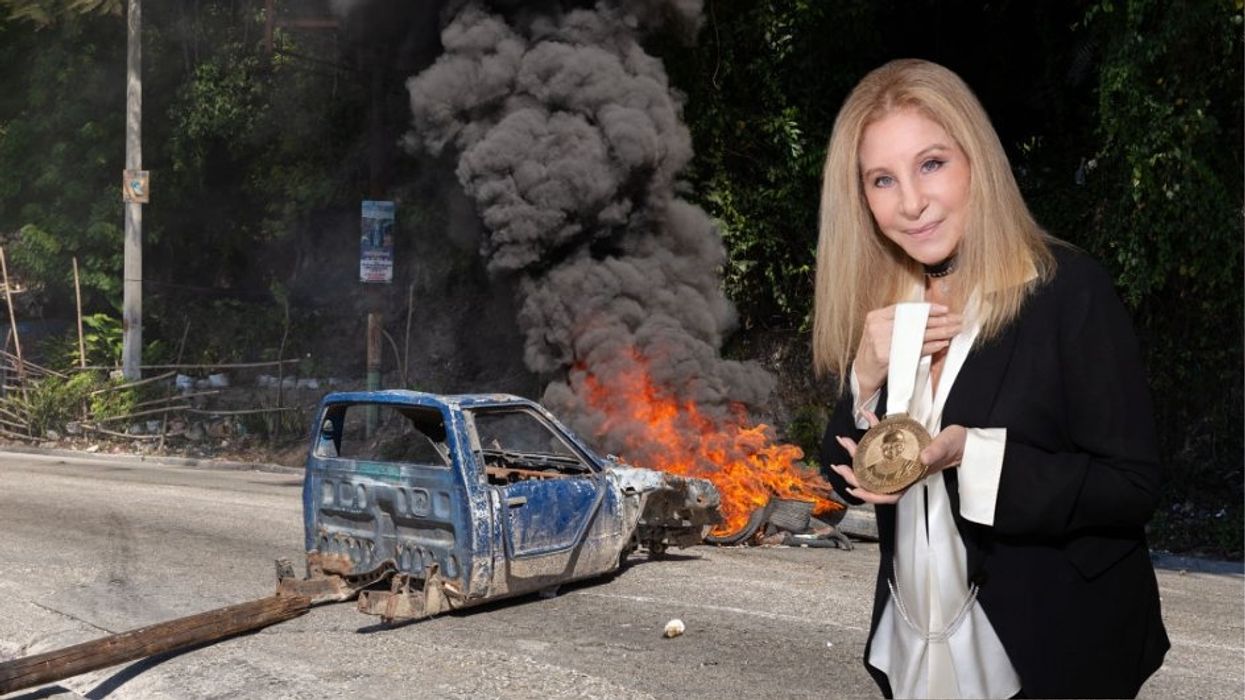
© 2024 Blaze Media LLC. All rights reserved.
I've Never Seen Anything Like It': The Catastrophic Event Scientists Say Led to These Fossils
February 05, 2014
"Scientists have been curious for a long time..."
For years scientists have puzzled over the amazingly well-preserved fossils found in an area of northeastern China that was once a wetland filled with lakes.
Scientists were unsure just how the "Jehol Biota," alleged to be 120 million and 130 million years old, remained so well preserved. Some of the fossils were intact enough that the contents of stomachs could be analyzed and colors of feathers could be determined.
"Scientists have been curious for a long time in how these animals were killed and became exceptionally preserved," lead researcher Baoyu Jiang from Nanjing University told the BBC.
 Fossils of the Jehol Biota. Researchers recently found evidence supporting that the animals died and were transported and preserved as a result of a volcanic blast. (Image source: Baoyu Jiang)
Fossils of the Jehol Biota. Researchers recently found evidence supporting that the animals died and were transported and preserved as a result of a volcanic blast. (Image source: Baoyu Jiang)
Given that fossils of fish were intact next to birds and mammals, a massive catastrophe was speculated, but new evidence suggests it was a Pompeii-like volcanic event that killed the animal and plant-life -- and preserved them.
After reviewing the fossils and sediments, researchers from Nanjing University in China found that some fossils showed evidence that they were exposed to extreme heat. The researchers also postulated that such an event was the cause of " transporting the bulk of the terrestrial vertebrates from different habitats, such as lizards, birds, non-avian dinosaurs and mammals, into [lake] environments for burial," the authors said in the study abstract.
"Terrestrial vertebrate carcasses transported by and sealed within the pyroclastic flows were clearly preserved as exceptional fossils through this process," they continued.
The volcanic blast would have blown the wildlife at speeds up to 450 miles per hour, according to the study.
Smithsonian Magazine explained more about the impact such a blast would have on the environment:
This wasn’t just any eruption, however. Most likely, what killed the Jehol Biota creatures was a pyroclastic density current—a wave of hot gas emitted from a volcano that can move up to 450 miles per hour. Such natural belchings are nature’s equivalent to chemical warfare or an atom bomb: uncompromisingly deadly, destructive and powerful. The gas from those currents can reach temperatures of 1,830 °F and instantly kills any living organism it touches. The heat blast is also strong enough to propel boulders across the ground, which move fast enough to flatten trees. Finally, the deadly display is topped off by a rain of extremely hot ash.A pyroclastic density current famously annihilated the towns of Pompeii and Herculaneum in 79 AD, and it seems this scenario wreaked havoc on the Jehol Biota, too. The fossilized animals, the researchers write, show “entombment poses” characteristic of being caught in a pyroclastic density current, including flexed limbs and extended spines. These postures “result from postmortem shortening of the tendons and muscles,” they explain. Indeed, the animal victims’ postures match up with those found at more recent volcanic events, such as the 1902 Mount Pelee eruptions. Six of the skeletal remains studied at Jehol Biota also showed a darkening of the bones, which the researchers think is carbonized muscle and skin tissue -- a result of the hot ash hitting their bodies.
Science magazine, which called the fossils the result of a "Chinese Pompeii," included the perspective of researchers familiar with the Pompeii incident.
Janet Monge, an anthropologist at the University of Pennsylvania Museum of Archaeology and Anthropology, told Science these Chinese fossils “have a very particular type of fracture pattern, a classic example of bone failure associated with extreme heat."
 The eruption of Mount Vesuvius buried thousands of residents in Pompeii, preserving them in their moment of death. (Image source: Heleen Kwant/Flickr)
The eruption of Mount Vesuvius buried thousands of residents in Pompeii, preserving them in their moment of death. (Image source: Heleen Kwant/Flickr)
"I’ve never seen anything like it outside of Pompeii," she added.
Mike Benton, a paleontologist with the University of Bristol, told BBC that the observations confirm what was already suspected by researchers.
"But the authors go a step further in suggesting that all the Jehol animals were killed, transported and exceptionally preserved by the pyroclastic flows," he said, noting that the research challenges previous theories that the animals either lived around the lakes or were transported by waterways.
The study was published in the journal Nature Communications.
Want to leave a tip?
We answer to you. Help keep our content free of advertisers and big tech censorship by leaving a tip today.
Want to join the conversation?
Already a subscriber?
more stories
Sign up for the Blaze newsletter
By signing up, you agree to our Privacy Policy and Terms of Use, and agree to receive content that may sometimes include advertisements. You may opt out at any time.
© 2024 Blaze Media LLC. All rights reserved.
Get the stories that matter most delivered directly to your inbox.
By signing up, you agree to our Privacy Policy and Terms of Use, and agree to receive content that may sometimes include advertisements. You may opt out at any time.


